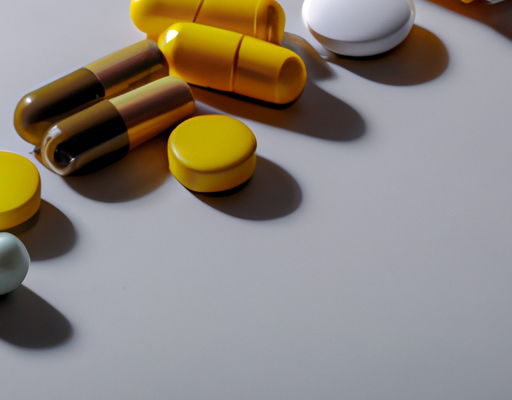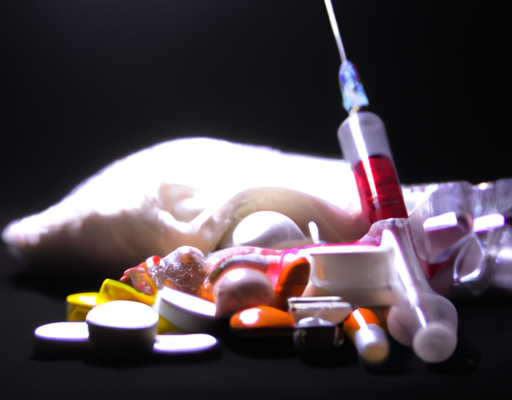Background
Have you ever noticed how some of the bumps that appear on your skin look similar but are slightly different? While you may think that all these bumps are the same, there is a key difference between a papule and a pimple and it is important to know the difference so you can properly treat the skin condition. In this article, we will explain the differences between the two and provide an ordered list of ways to manage them.
- Keep skin clean and dry by washing it twice a day
- Avoid oily, greasy makeup
- Use gentle skincare products
- Exfoliate the skin a few times a week
- Change pillowcases regularly
- Avoid picking or popping any bumps
Definitions
Papule and Pimple are two skin conditions that are often confused because they both show up as red bumps on the skin. A papule is a small, raised, solid bump on the skin. It is usually less than 5 mm in diameter and is sometimes pink, red or the color of your skin. A pimple is a type of acne that is caused by blocked or clogged pores. It usually appears as a red swollen bump filled with pus and can be painful or itchy. The key differentiating factors between the two are:
- Size – Papules are less than 5mm in diameter, whereas Pimples can be larger.
- Pain – Papules are generally painless, whereas Pimples can be painful or itchy.
- Filled substance – Papules are solid bumps, whereas Pimples are filled with pus.
Appearance
Papules and pimples are both common skin conditions that can cause blemishes, but they are not the same. Papules are small, raised bumps that don’t contain any visible pus or fluid. They usually have a red or pink color and may be sensitive to the touch. Pimples, on the other hand, are larger and have a center filled with white pus or fluid. They are usually more painful than papules and can cause more severe symptoms. Although they can be unsightly and uncomfortable, both papules and pimples can be treated with proper skin care and topical medications. Regular skin care, such as cleansing and moisturizing, can prevent both papules and pimples from developing. If you already have them, applying over-the-counter medications or prescribed antibiotics can help clear them up. In more serious cases, a dermatologist may be needed for proper treatment.
Causes
Our skin is very delicate and prone to breakouts from time to time. Papule and Pimple are two types of skin blemishes caused by blocked pores. Papules are small red bumps with no visible head that may feel hard when touched. On the other hand, Pimples appear when pores get clogged with sebum and dead skin cells producing whiteheads that often swell up and become painful and red. Papules and Pimples have many factors in common but their causes differ from each other. Papules are often a result of a bacterial infection that affects the skin’s pores while Pimples are usually caused by an accumulation of excess oil and dead skin cells. In some cases, both types of skin blemishes can be caused by inadequate facial care, stress, hormonal imbalances and an unhealthy diet.
Treatment
When it comes to treating papules and pimples, it is important to note that there are a few key differences between the two. First, papules are usually too small to be treated with topical medications, while pimples can usually be treated with topical creams, gels, and ointments. Second, papules are usually more difficult to treat than pimples since they are deeper in the skin. To treat papules, it is usually necessary to use a combination of medications such as oral antibiotics and topical treatments. Finally, papules may require more aggressive treatments such as cortisone injections, laser therapy, or chemical peels. All of these treatments should be discussed with a dermatologist to determine the best course of action.
Prevention
If you want to prevent papules and pimples, start by keeping your face clean with a gentle cleanser each day. To give your skin an extra boost, use a mild daily exfoliating scrub to remove dead cells that can cause clogged pores and lead to breakouts. It’s also important to keep skin moisturized with an oil-free product to protect against dryness and irritation. Finally, it’s important to stay away from comedogenic products, or products that clog the pores. Be aware of what you are putting on your face, as well as any stressors in your life that can contribute to breakouts. Making small tweaks in your skincare routine and daily stress levels can help keep papules and pimples from forming.
Takeaway
Sometimes, it can be difficult to tell the difference between a papule and a pimple. It is important to recognize the difference, however, as it can be an indication of the level of seriousness of the skin condition. The following tips will help you make the distinction:
- Papules are generally firmer and raised compared to pimples.
- Papules often appear in clusters on the skin, whereas pimples tend to appear as individual lesions.
- Papules tend to be very tender or sore, whereas pimples are usually not.
- Papules tend to last longer than pimples and don’t respond to conventional treatments.
By recognizing the difference between a papule and a pimple, you can determine the best course of action for treating the skin condition. If it is a papule, it is important to seek medical advice in order to get the correct treatment for your skin condition.





No Comments